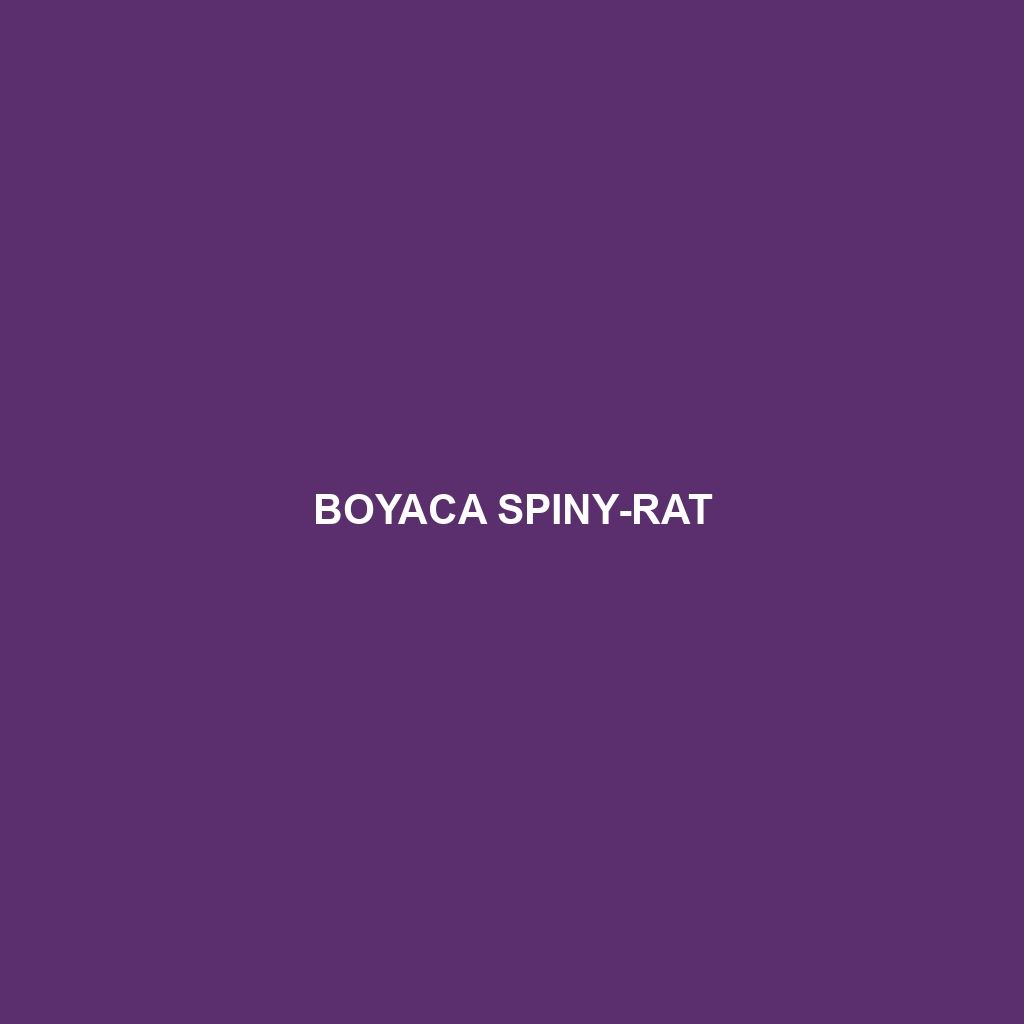Common Name: Boyaca Spiny-rat
Scientific Name: Proechimys boyacensis
Habitat:
The Boyaca Spiny-rat is primarily found in the temperate forests of the Andean region in Colombia. It inhabits areas characterized by dense undergrowth and is often seen in montane forest elevations ranging from 2,000 to 3,200 meters. This unique habitat provides essential cover and contributes to its survival in the wild.
Physical Characteristics:
This species typically measures around 20 to 30 centimeters in body length and weighs approximately 500 to 1,000 grams. The Boyaca Spiny-rat is distinguished by its spiny fur, which consists of coarse, stiff bristles. Its coloration varies from reddish-brown to dark gray, with a lighter underbelly. Notable features include large ears and a short, bushy tail that assists in balancing while navigating its arboreal habitat.
Behavior:
Boyaca Spiny-rats are primarily nocturnal, exhibiting heightened activity during the night. They are known for their excellent climbing abilities, often foraging for food in trees. These rodents are social animals, typically found in small family groups, and communicate through a variety of vocalizations and body language. Their behavior also includes burrowing and nesting in protected areas to escape predators.
Diet:
The diet of the Boyaca Spiny-rat is primarily herbivorous, consisting of leaves, fruits, seeds, and fungi. These rodents play a crucial role in seed dispersal within their habitat, helping to maintain forest health. Their feeding habits are adapted to their environment, allowing them to thrive in the nutrient-rich foliage of their mountainous home.
Reproduction:
Boyaca Spiny-rats have a breeding season that typically occurs during the warmer months, often peaking in the rainy season. Females give birth to 2 to 4 offspring after a gestation period of about 30 days. The young are born blind and hairless but quickly develop the ability to explore their surroundings. Parental care is crucial in the early stages, as both parents participate in raising the young.
Conservation Status:
The Boyaca Spiny-rat is currently listed as vulnerable on the IUCN Red List. Habitat loss due to deforestation and agricultural expansion poses significant threats to its population, and conservation efforts are essential to protect this unique species from further decline.
Interesting Facts:
One fascinating fact about the Boyaca Spiny-rat is its unique adaptation of spiny fur, which provides protection against predators. Additionally, these rodents can be quite vocal, often engaging in communal calls that enhance group cohesion. Their ability to climb efficiently makes them a remarkable sight in the lush forests of Colombia.
Role in Ecosystem:
As an important herbivore within its ecosystem, the Boyaca Spiny-rat contributes to the health of the forests through seed dispersal and plant growth regulation. Its presence impacts the food web, providing a food source for predatory species and helping to maintain biodiversity in its mountainous habitat.
